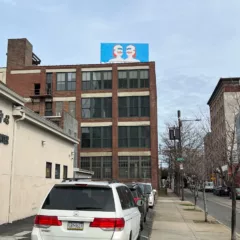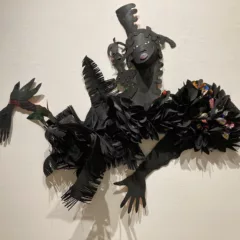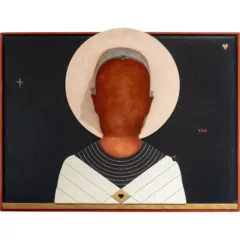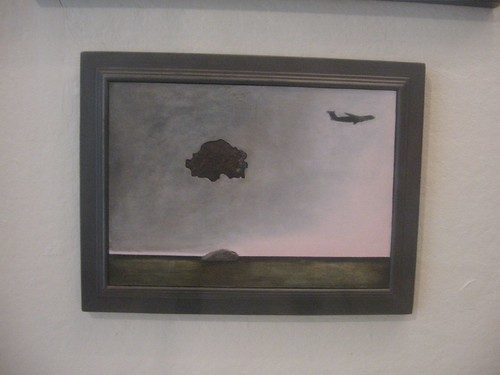
As far as art “of the people, by the people, for the people” in City Hall, the “for the people” element has taken a turn for the worse. To get into City Hall these days, you have to go through a checkpoint (being paid for by Homeland Security). The first time I went, the line was long and slow. So this week was my second attempt to see the current Art in City Hall exhibit.
I imagine this new situation might be a barrier to anyone but friends and family of the artists involved, which is too bad, because the summer show Art of the City goes down like a mint julep on a hot summer day.
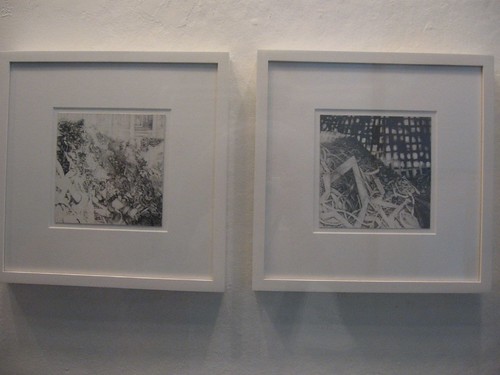
Sarah Steinwachs, Detritus and Light, drawings
Curated by local artist and current Art in City Hall Exhibitions Committee
Chair Cavin Jones, the exhibit has some offbeat choices that turn what could have been a snore into something worth a detour.
Anne Minich’s dark Cloud, with its little airplane and unlikely rocky mound put our lives here on earth into some sort of perspective–and broaden the theme of the show beyond the cityscape.
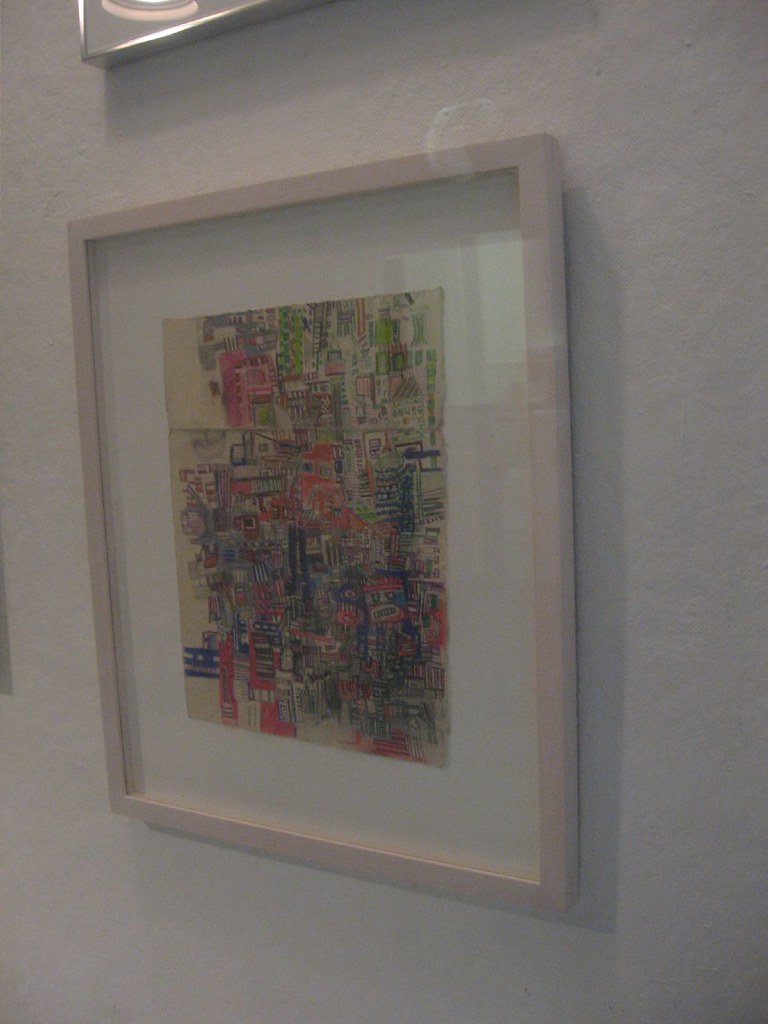
Miriam Singer, Imaginary Map 6, pencil, marker and monotype on paper
The layered life of the cityscape, though, is a theme that anchors the show. The urban grid and its jazzy stops and starts is the subject of Miriam Singer’s two mappy pieces. Singer’s work is an accretion of time and space. She carries the paper around with her to work on as she moves around the city, until layers of print and mark-making and scars like folds and small tears from the paper’s travels reach critical mass.
Other abstractions in the show didn’t stray far from the grid, focusing on windows and bricks.
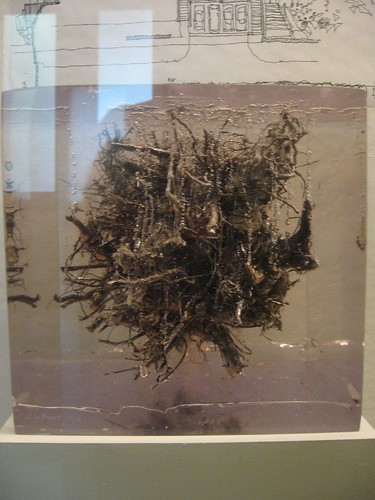
Keiko Miyamori, City Root Maquette #2, root, bricks, metals in plastic block (the drawing, a detail of which is reflected on the block, is from Sean O’Rourke’s sweet cartoony pen and ink of San Francisco)
Keiko Miyamori’s two root sculptures go beneath the surface, pushing the show in still another unexpected direction. The roots encased in plastic are of the Only God can make a root variety, even amid the detritus of concrete and other urban materials. The theme also shows up beautifully in three lovely drawings by Sarah Steinwachs, two of them of detritus and light and one of light on windows (Only God can make light).
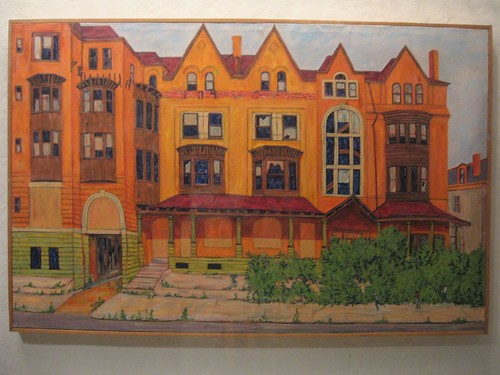
Walter Edmonds, Past/Future, oil on canvas
For Louis Allen Charles, Walter Edmonds, and Leroy Johnson, the changes of the city over time are things to ponder. Charles’ Summer–Old Philadelphia, circa 1914, offers an outsider perspective on an old, busy city street with tall modern buildings in the distance looming like ghosts above. Edmonds seemingly cheerful illustration on canvas of a neighborhood, on close inspection shows a weedy sidewalk with boarded up buildings and the march of gentrification–and change. And Johnson’s construction from found objects, with rooms, views and layers of lives, suggests a social structure as well as a building structure on the verge of collapse.
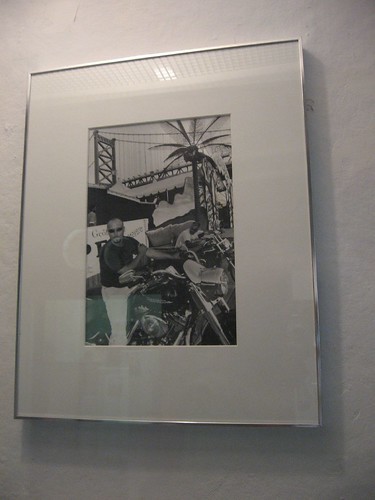
Laura Jean Zito, Biker by the Benjamin Franklin Bridge, b/w gelatin silver point
The layers of space come through loud and clear in Laura Jean Zito’s photograph of bikers with a background of the city’s visual clutter and space confusion. The photograph has sharp lights and darks and a wonderful feel of spinning out of control.
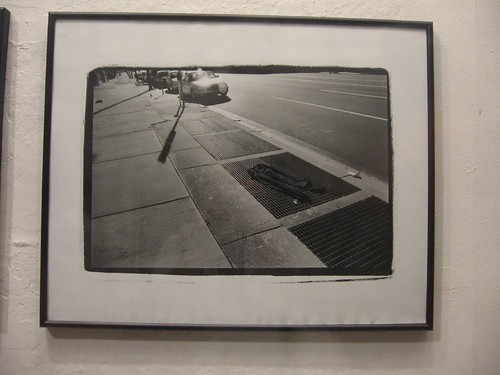
Chelsea Combs, The Sound of Pants Drying, silver gelatin print
A photo by Chelsea Combs takes a thoughtful tack. “The Sounds of Pants Drying,” was a nice conceptual stab at the urban scene; the pants, like the homeless person they seem to represent, use the upwell of cool air from the subway tunnel to dry off. On a more literal note but with a related theme, Deborah Gross-Zuchman’s collage of obscenely large vegetables with a starving child below is a political poster about hunger in the land of plenty.
The exhibit has 39 artists, and the City Hall political meter — or maybe it was the PC-meter — was on high alert, so the list of artists arrived with a zip code next to each name. As usual, the exhibit was in those awful glass cases on the second and fourth floor, but this show seemed to rest pretty comfortably within and somewhat overcome those limitations.
Anyway, I think it’s a shame that this program, which mixes its democratic agenda with some serious work, is such an uneasy fit in City Hall.



